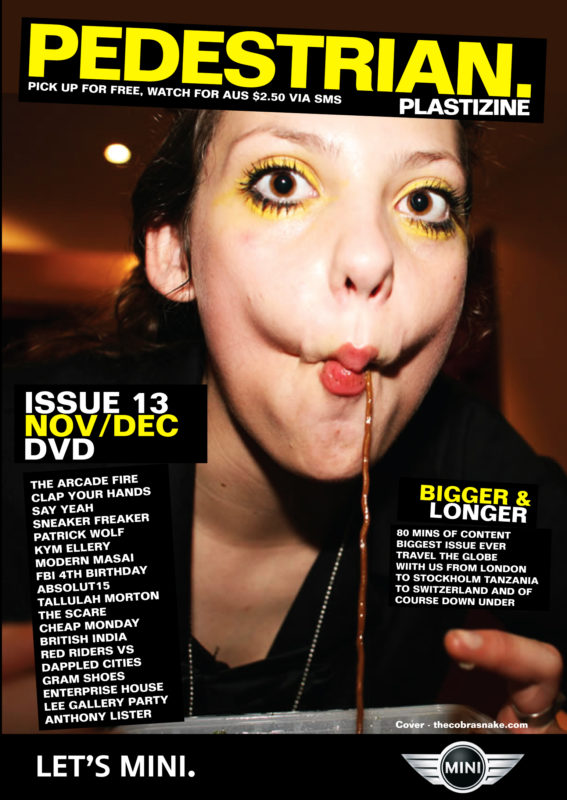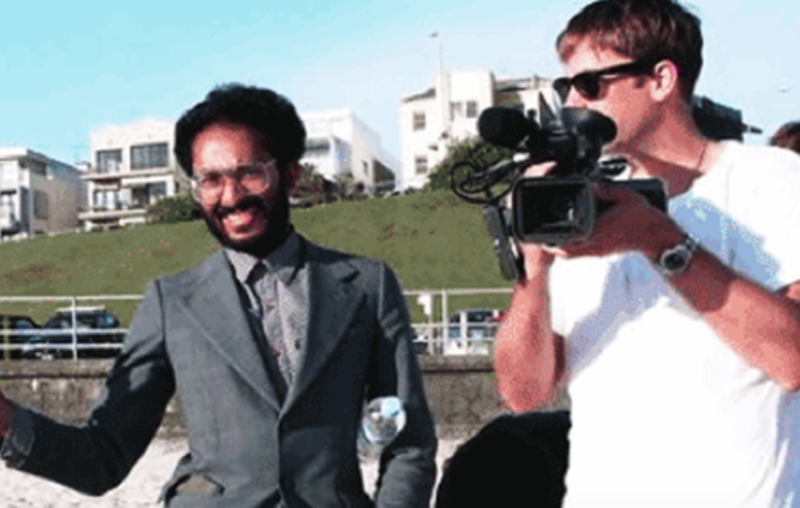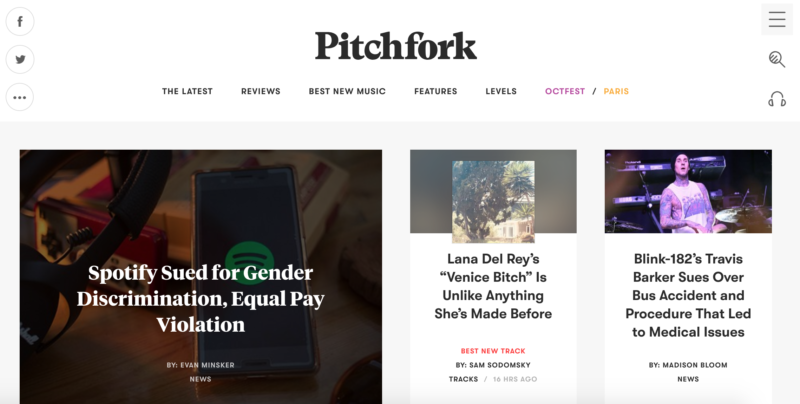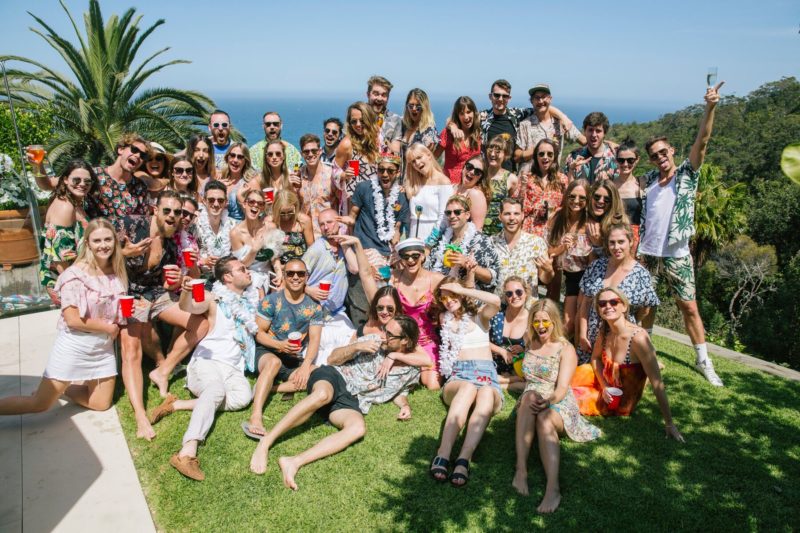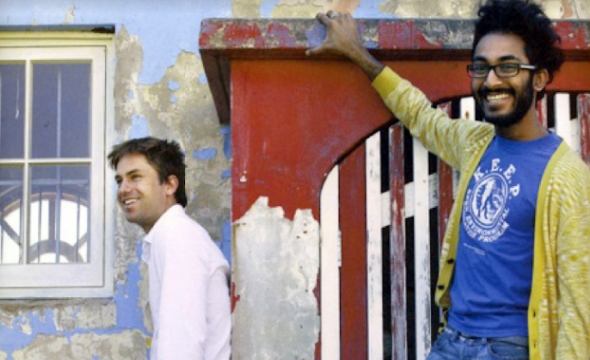From DVD magazine to Nine buyout: The story of Pedestrian TV
Over 13 years, Pedestrian TV has flourished into a fully-owned Nine entity. Mumbrella’s Zoe Samios sits down with co-founders Oscar Martin and Chris Wirasinha to talk about the journey and the future of one of Australia’s most successful digital publishers.
The idea that two young, ambitious media assistants with zero experience could create a multi-million dollar business seems far-fetched, now more than ever.
More far-fetched is the idea a brand like BMW Mini would take a gamble on those two young media assistants, who were planning to launch a DVD magazine just 13 years ago.
And yet that’s how it all began for two young, ambitious Universal McCann employees otherwise known as Chris Wirasinha and Oscar Martin, the now not-so-inexperienced founders and former owners of Pedestrian TV.
The pair spent a lot of their lunchtimes discussing the idea of taking a Cosmo or Cleo to TV, and stumbled upon a Brisbane-based business that was dropping DVDs into mailboxes. The opportunity to put out a new media product with non skippable content for people’s homes seemed like a good way to make a lot of money, fast.
Off they went, costing out the concept of a DVD magazine.
“We were going to sell 30 second ads for the equivalent of what we were seeing TV ads cost and we were going to be multi-zillionaires in the first couple of years. But it didn’t really work out like that,” Martin laughs.
All jokes aside, the evolution of that DVD magazine into one of Australia’s biggest youth publishers, is a strong example of how to evolve a brand beyond its medium: a concept legacy publishers have struggled with for years.
For two-and-a-half years the pair worked on the bi-monthly DVD magazine, a move which they argue put them on the map and helped establish an audience. It was released in shops like General Pants and in cafes and hairdressers, the pair creating all the content themselves in the initial stages.
And yet there was one issue: it was a risk for brands.
“We were going and shooting with really interesting talent who were creative and doing different things and bringing those stories to life in a way that they’ve never been told, so the audience understood it, but for brands it was a new medium as well as a new brand,” Wirasinha says.
“You can change the way that people advertise if you’re a company at the scale of Google but if you’re two people in their early 20s trying to make something happen it’s a lot harder to change the way the entire industry works.”
But if there was one word to describe the pair it was persistence: cold-calling brands and agencies, and suiting up to meet them in the hope of getting them on board.
Finally, after a number of conversations, they got lucky. The first was BMW Mini, who sponsored the first 15 issues of the DVD, and slowly other brands, like Motorola, came flooding in.
“We weren’t going to take no for an answer,” Martin says. “We believed in the product so much and it radiated from the meetings we were having. We were so enthusiastic, passionate and I think they just wanted to give us a chance. But we weren’t going to let it fail.”
Wirasinha adds that while the Australian industry is supporting of up and comers, the pair were tapping into something big media couldn’t and weren’t doing at the time, “ underground culture”.
“That and persistence and we had a lot of people saying ‘we’ll see how this goes’, but that ability to create video content from brands very early on was appealing as well,” Wirasinha says.
But ultimately, in Martin and Wirasinha’s humble opinion, a part of their success came from ‘right place, right time’. They feel fortunate they were part of a group of digital media brands which were swept up in the evolution of content sharing platforms like Myspace and Facebook.
“We were also working with brands when they were getting their first digital budgets. We’d get a brand and a brief and it would be like – Smirnoff has $5,000 and want to spend it online. For the brands as well as that time, they were testing and learning and we were doing the same thing,” Wirasinha says.
“The thing we’ve managed to do arguably better than anyone else in the market and it’s essentially getting brands to buy in to that connection that you have with the audience and put some trust in your ability to help them.”
Slowly, the brand began to evolve, and eventually, Wirasinha and Martin went from producing bi-monthly content to daily content through a website, a major change in the way they worked. And they added in a team too: someone to do the video editing and content.
Martin and Wirasinha became ambitious. They’d seen the likes of Pitchfork and Gawker. The aim, they explain, was to become a “globally revered site” for popular culture and underground youth culture.
“We weren’t really broad at first,” Wirasinha says. “What we found that was every time we wrote about local things and wrote about things that were happening in our local market, that resonated much more strongly with the audience. Every time we wrote about a global topic and put our spin on it, we were doing something slightly different but weren’t adding as much value.
“But then we would focus on local news and things that were happening Australian bands or musicians or DJs or festivals and that immediately started to kind of resonate and engage the audience a lot more than when we were trying to kind of take on the world from like a little office in Sydney with five staff,” he says.
“It was a bit of game changer for us in terms of getting that focus for the business, and a reason for being and existing.”
Wirasinha says as the title evolved, the pair began to get inspiration from daily e-newsletters among the trade press, which were a rarity among the rest of the publishing industry at the time.
“At the time, the norm was not to do daily emails. Everyone was just doing weekly emails. I remember getting this email, from AdNews and later from Mumbrella when it started, I’d get these emails and I was going: I find this interesting because it’s news from my industry and my world but none of the culture-based publishers are doing this. Now it seems so silly to think that was an innovation at the time,” he reflects.
“We were always looking for the next innovation and the next thing to be able to grow and evolve the brand, and then Facebook comes along and it was a huge, and we were early to that and it was really good for the business in terms of being able to grow the brand.”
After 10 years in market, Pedestrian sold a 60% stake in its business to Australian media company, Nine, for a rumoured $10m. It marked the beginning of a massive push for the digital platform, which was hoping to build out its verticals and find new ways to work with brands, all the while keeping the ‘cheeky’, ‘innovative’ and ‘fun’ tone of the platform in tact.
“Leading up to the sale to Nine, we’d been running Pedestrian for a decade and we knew that the brand had lots of growth left in it, but it felt like we were starting to become a bit more risk averse, whereas if you look at the history of Pedestrian, it was all about us taking big risks,” Wirasinha says.
“When we were hiring staff, it meant we were making less money, because we were hiring people with the idea we would make more money in future. There were times when we had six weeks worth of cash left in the business and the business was always boot strapped, so there wasn’t an option to go into negatives – that would’ve been the end of the business.
“Every time we went to the table we were risking everything that we created over a decade, and having started the business in our early 20s, we didn’t have anything else to fall back on.”
It means that went the pair began to get approached by mid-tier players, they went out to everyone to see what they could do for the business. They were looking for a “natural home”.
“The beauty of the vision Nine had for the business was that it was very similar to what we needed at the time which was: ‘how do we maintain our entrepreneurial freedom to be able to achieve all the next growth phase while also being able to de-risk our investment?’” he says.
“There were other businesses that we really admired and business we looked up to like Modular Records and the like. Those businesses were phenomenal businesses that had a huge impact on culture, but I don’t think they ended up with the best outcomes for those founders that they could have had.
“The Nine partnership allowed us to start taking calculated risks again. We didn’t have to be so defensive,” he ads.
Once Nine had bought a stake in the business, the fire once in the bellies of two twenty-year-olds returned. The pair launched a younger version of Pedestrian TV, Pez, and a number of new verticals which brands could align with, including Pedestrian Pets and Pedestrian Home.
The plan for the pair is now to build scale, to become like major broadcasters, who are making $100m worth of revenue.
But the pair will never stop targeting the 16-35 category, regardless of how their audience evolves.
“We’ve never wanted to grow up with our audience,” Wirasinha says. “That’s not really a recipe for continued success, because in 20 years time does that mean all of a sudden your audience is the grocery buying category?”
So what is to become of Pedestrian TV, a fully owned entity of Nine as of 2018?
A Nine multichannel, a literal Pedestrian TV, perhaps?
“It will be the number one place to reach young people in Australia without a doubt,” Martin says of the next five years.
“But funny you should mention the TV thing with Nine,” he laughs, looking over to Wirasinha.
“I mean we have this stupid name Pedestrian TV because dot com wasn’t available but it will all finally make sense.”
Wirasinha says Triple J is a brand they look towards, despite being owned by the government-funded broadcaster ABC.
“We’re looking to execute on something as ambitious and part of that is being multichannel and not just relying on a website that distributes content through Google and Facebook,” he says.
“Even though the ownership has fully transitioned it’s still about how Pedestrian stays separate and relevant, and in the same sort of way that Stan operates and has a huge success as a largely independent business, that’s what we are looking to achieve.”
“Out of any brand in the market that’s got a proven track record now of incubating founder-led businesses or businesses trying to disrupt a market, they’ve done a fantastic job of that, but they [Nine] know that the secret ingredient is giving those business the kind of space they need to operate and deliver those results.”
In the meantime, Martin and Wirasinha will still be involved in the day to day running of the business and be involved in some capacity until beyond 2020, at least. But they’re hoping that when they do finally depart, the brand and its strength in the market will remain.
“We’ve got such a phenomenal team that – to be honest – there’s days where we don’t even need to be here because we’ve got a team. Everyone knows what they need to do and we’ve built a really thriving team of superstars who are killing it,” Wirasinha says.
“You have to be concerned when you have these founders that have this overbearing presence in their businesses, because it doesn’t scale very well. That’s what we’ve always wanted to do: build a business that scales to heights that people have never even seen, that a digital-first publisher has achieved in Australia. And we can’t just do that with Oscar and us.”
It’s been a long, challenging, but worthwhile journey for those two twenty something year olds who had passion and an idea. But if they launched again today, would they do anything different?
“100%. To start with we’d structure the business,” Martin laughs.
“Media has changed a lot, but at the same time, I think the core of why the brand worked is probably true today.
“The DVD – no one had seen anything like it… it became a must-watch. Doing something that is so different and stands out is good advice, because it worked, for us.”


